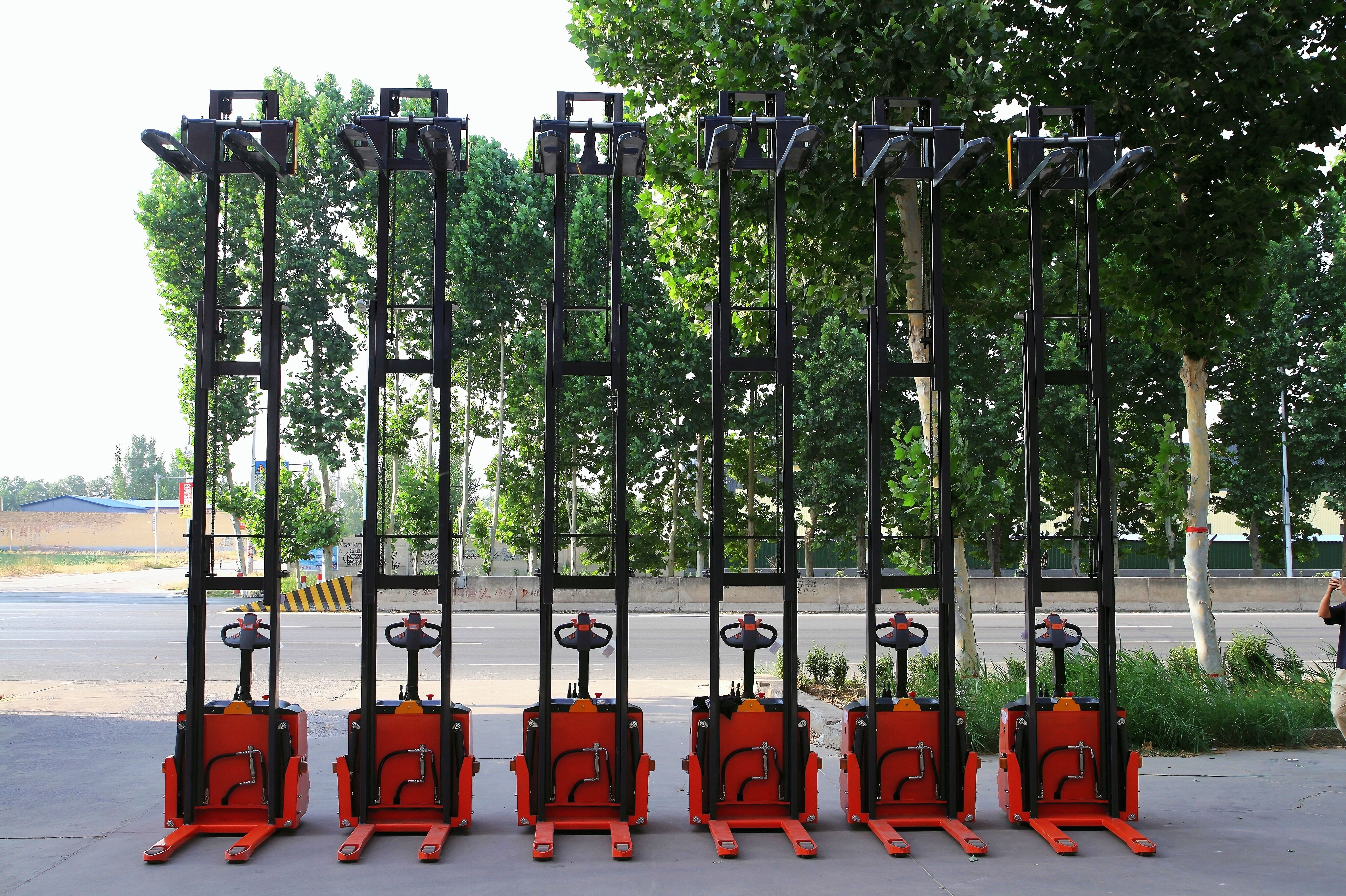Sa mabilis na lumalagong industriya ng logistik at imbakan ngayon, mahalaga ang kahusayan at pag-optimize ng espasyo. Ang mga stacker—mga kompakto at multifungsiyonal na makina para sa paghawak ng materyales—ay gumaganap ng mahalagang papel sa pag-angat, paglipat, at pag-aayos ng mga kalakal nang ligtas at mahusay. Sa anumang industriya tulad ng retail, pagmamanupaktura, o mga sentro ng pamamahagi, tinutulungan ng mga stacker ang mga negosyo na ma-maximize ang espasyo sa imbakan habang binabawasan ang pangangailangan sa manwal na paggawa.

Ang stacker ay isang uri ng kagamitan sa paghawak ng materyales na dinisenyo upang iangat at ilipat ang mga pallet, kahon, at iba pang karga nang pataas at pahalang. Hindi tulad ng tradisyunal na forklift, ang mga stacker ay karaniwang mas kompakto, madaling mapapatakbo, at mas nakakatipid, kaya mainam para sa maliit hanggang katamtamang operasyon.
Nagkakaiba-iba ang mga stacker depende sa kanilang gamit:
1.Manual Stackers (Hand Pallet Stackers)
Pinapatakbo ng kamay, walang pangangailangan ng kuryente.
Mainam para sa magaan na pag-angat (hanggang 900 kg) sa maliit na warehouse o tindahan.
Murang gastos at madaling alagaan.
2.Mga Electric Stackers (Mga Powered Pallet Stackers)
Pinapagana ng baterya para madaling pag-angat (hanggang 4,500 lbs).
Perpekto para sa madalas na gawain sa pag-angat sa mga sentro ng pamamahagi at mga pasilidad sa pagmamanupaktura.
Nabawasan ang pagkapagod ng operator kumpara sa mga manual na modelo.
3.Mga Walkie Stacker
Naglalakad ang operator nang mag-isa habang hinahawakan ito gamit ang hawakan.
Mainam para sa makipot na mga kalye at siksik na espasyo.
Magagamit sa mga manual at electric na bersyon.
4.Mga Rider Stacker
Nakakasakay ang operator sa makina para mas mahusay na epektibo sa malalaking bodega.
Mas mataas na kapasidad ng pag-angat (hanggang 6,000 lbs) at mas matataas na taas ng pag-angat.
Angkop para sa mga operasyon na may mataas na dami.
5.High-Lift Stackers
Dinisenyo para sa patayong pag-stack sa mga sistema ng maramihang imbakan.
Maaaring umabot sa taas na higit sa 10 talampakan, nag-o-optimize ng imbakan sa garahe.
1.Episyon ng Espasyo – Kompakto ang disenyo na nagpapahintulot sa operasyon sa makipot na espasyo.
2.Matipid sa Gastos – Mas mura ang pagbili at pangangalaga kumpara sa forklift.
3.Ergonomiko at Ligtas – Binabawasan ang manu-manong pag-angat, pinakamaliit ang mga pinsala sa lugar ng trabaho.
4.Matikling Gamitin – Gumagana kasama ang mga pallet, tambol, at iba pang uri ng karga.
5. Mga Piliang Nakabatay sa Kalikasan – Ang mga modelo ng kuryente ay hindi nagbubuga ng anumang emissions.
Sa pagpili ng stacker, isaalang-alang ang sumusunod:
Kapasidad ng Karga – Tugmain ang makina sa karaniwang bigat ng iyong karga.
Taas ng Pag-angat – Siguraduhing natutugunan nito ang iyong mga kinakailangan sa imbakan.
Pinagkukunan ng Kuryente – Manual para sa magaan na paggamit, elektriko para sa mabibigat na operasyon.
Maniobra – Walkie stackers para sa makitid na daanan, rider stackers para sa mas malalaking espasyo.
Dahil sa mga pag-unlad sa teknolohiya ng bodega, ang mga stacker ay nagiging mas matalino:
Mga Semi-Automatikong Stacker – Sumusunod sa mga paunang programa ng ruta para sa paulit-ulit na gawain.
Mga Sensor na May-Access sa IoT – Subaybayan ang bigat ng karga, haba ng buhay ng baterya, at pangangailangan sa pagpapanatili.
Mga Pinahusay na Sistema ng Kaligtasan – Mga tampok na anti-rollback at control ng bilis.
Ang mga stacker ay mahahalagang kasangkapan para sa mga negosyo na nagnanais mapabuti ang kahusayan, bawasan ang gastos, at i-optimize ang espasyo sa imbakan. Kung kailangan mo man ng isang simpleng manual na stacker para sa mga mabibigat na gawain o isang mataas na kapangyarihang elektriko para sa mabibigat na pag-angat, mayroong stacker na idinisenyo upang matugunan ang iyong mga pangangailangan.
Naghanda na bang mapabuti ang operasyon ng iyong bodega? Galugan ang tamang stacker para sa iyong negosyo ngayon!